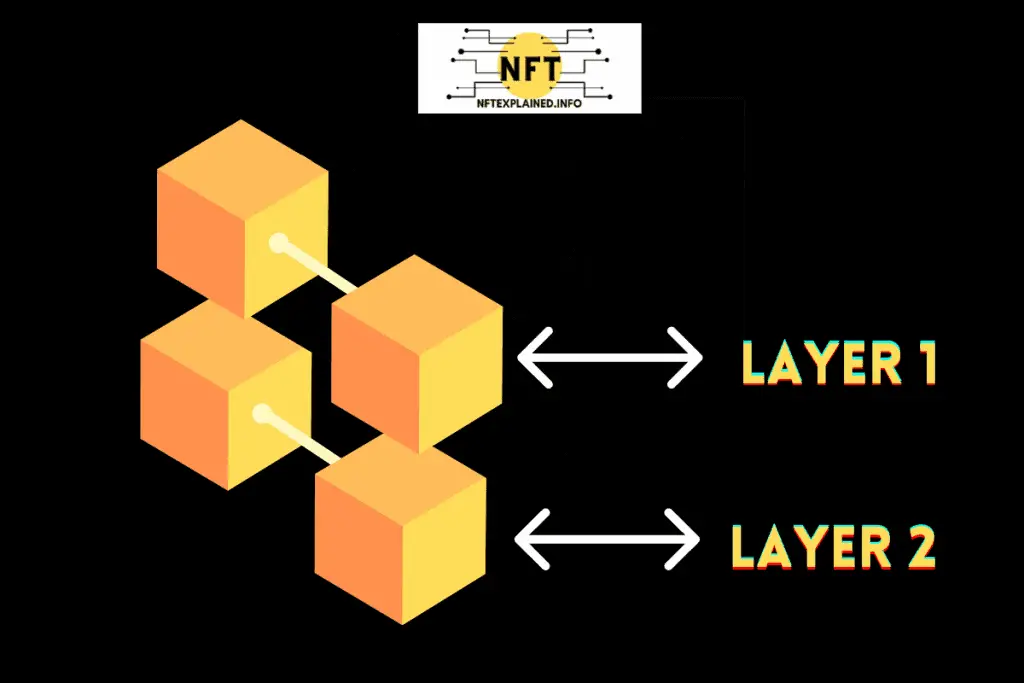
The blockchain has seen a need for an increase in transaction throughput as crypto has become more popular in countries – especially those where crypto is a legal tender – and as more businesses accept digital assets as a form of payment.
Throughput in this context is defined as the number of transactions a blockchain can handle at a given point in time; the need for scaling to facilitate faster transactions is what brought layer 2 blockchains into the mix. So what exactly is the difference between layer 1 and 2?
A layer 1 blockchain is the underlying technology for the entire blockchain system; it is responsible for immutability, security, consensus mechanisms, and a distributed ledger. Layer 2 blockchains are built atop layer 1 blockchains; they typically enhance scalability and efficiency by handling transactions off-chain.
Layer 1 blockchains are commonly the foundation for decentralized applications and protocols like layer 2 blockchains. At its most basic explanation, layer 1 blockchains are the core building blocks of the blockchain; it is what makes the blockchain the blockchain.
As the base blockchain, layer 1s provide immutability and therefore security by having nodes – which are essentially computers running the blockchains protocol – verify all information. This is what makes blockchain technology decentralized.
Layer 1 blockchains are responsible for the consensus mechanism – like proof of work or proof of stake – which are the overall governing mechanism for how a given blockchains goes about verifying transactions.
Lastly, layer 1 blockchains have a distributed ledger which is a copy of all transactions that have occurred – this run by many nodes and provides transparency (i.e. the provenance we see with NFTs).
In contrast, layer 2 blockchains are built atop layer 1 blockchains.
Layer 2s enhance scalability and efficiency which therefore increases transaction throughput. Layer 2s do this by verifying or solving transactions off-chain and then recording the transaction on-chain after everything is finalized.
This prevents the blockchain from being overloaded as transactions can be handled by nodes that are running the layer 2 protocol.
The specific protocol that layer 2 blockchains run depend on the consensus algorithm in use; however layer 2 blockchains typically handle a vast number of transactions that are not on the base layer. For example, with the Bitcoin Lightning Network, transactions are handled completely off-chain.
With the Bitcoin Lightning Network, these nodes – known as lightning nodes – run on a separate network instead of Bitcoin’s typical peer-to-peer protocol.
This means that the lightning network allows you to exchange or transact multiple times (as long as the amount being sent doesn’t exceed the sender’s balance) without submitting a transaction as a block on the blockchain.
For example, if you ate at a restaurant and ordered multiple times, each transaction wouldn’t be broadcasted on the ledger – or in this analogy, to the bank – until you closed your tab (as long as you had enough funds to continue purchasing food at the restaurant). This is an illustrative example of how Lightning Nodes work, but more broadly this is true of all layer 2 blockchains.
More on lightning nodes and the other most common blockchain nodes can be found in our guide, linked here.
Now that we know scaling is primarily what layer 2 blockchains bring to the table, let’s further examine scaling with layer 1 blockchains in mind.
What Is Layer 1 And Layer 2 Scaling?
Layer 1 scaling is scaling that is being done on the blockchain’s base level; this could be done by implementing a new consensus algorithm or increasing block size (to handle more transactions). Layer 2 scaling is done by handling transactions off-chain, which is accomplished separately from layer 1.
Layer 1 scaling is simply scaling that is being done on the foundational blocks of the blockchain.
Layer 1 scaling could be achieved by using a consensus algorithm that is optimized for handling high transaction throughput. Examples of a consensus algorithm with high transaction throughput include a delegated proof-of-stake as a smaller number of verified nodes are the ones reaching a consensus; since there are fewer nodes, transactions tend to be quicker. A delegated proof of stake algorithm is used on the Tron blockchain, created by Justin Sun.
Additionally, another route to layer one scaling would be attained by increasing the blockchains’ block size; block size is the largest amount of data a blockchain block can hold. This is the amount of data the operating system can work with.
Larger block sizes allow for more transactions to be processed within a single block, thereby increasing the scalability of a given blockchain on its foundational layer (layer 1).
Again, with layer 2, the ability to handle transactions not on-chain via payment channels or side chains is what enables faster transactions.
Now that we are familiar with the core differences, let’s examine some of the most widely recognized layer 1 and layer 2 blockchains.
What Is An Example Of A Layer 1 Blockchain Network?
Layer 1 blockchain networks are networks where the core infrastructure is in place and allows other protocols to be built atop it; examples of layer 1 blockchains include Bitcoin, Ethereum, Ripple, Litecoin, and Tron.
Bitcoin, Ethereum, Ripple, Litecoin, and Tron are all blockchins that are characterized by the core features of blockchain technology. These features include: immutability, security, consensus mechanisms, and a distributed ledger.
What Is An Example Of A Layer 2 Blockchain Network?
Layer 2 blockchains are characterized by being built atop and enhancing the features of a layer 1 blockchain; layer 2 blockchains most commonly enable off-chain transactions. Examples of layer 2 blockchains include: Bitcoin Lightning Network, Polygon (MATIC), and the Raiden Network.
The Bitcoin Lightning Network is something our team has previously mentioned and works using payment channels which allows for an unlimited number of transactions to occur before being recorded on the layer 1 blockchain – in this case Bitcoin.
Polygon (MATIC) is an open source blockchain that is built atop Ethereum and allows for a variety of decentralized applications to be built exercising the protocol.
Raiden Network is another layer 2 solution that is also built atop the Ethereum blockchain and works similar to the Bitcoin Lightning Network in that an unlimited number of transactions can occur on a payment channel before the transactions are recorded on the base – or layer 1 – blockchain (which would be Ethereum in this case).
If you found our content helpful please consider following our team on Instagram, Twitter & TikTok! As well as subscribe to our YouTube!
Additionally, please consider supporting our team’s content creation through doing business with our partners: Trade stocks & crypto on Webull – get 2 free stocks. Buy a Ledger hardware wallet. U.S. users can get a crypto trading discount on Binance!

